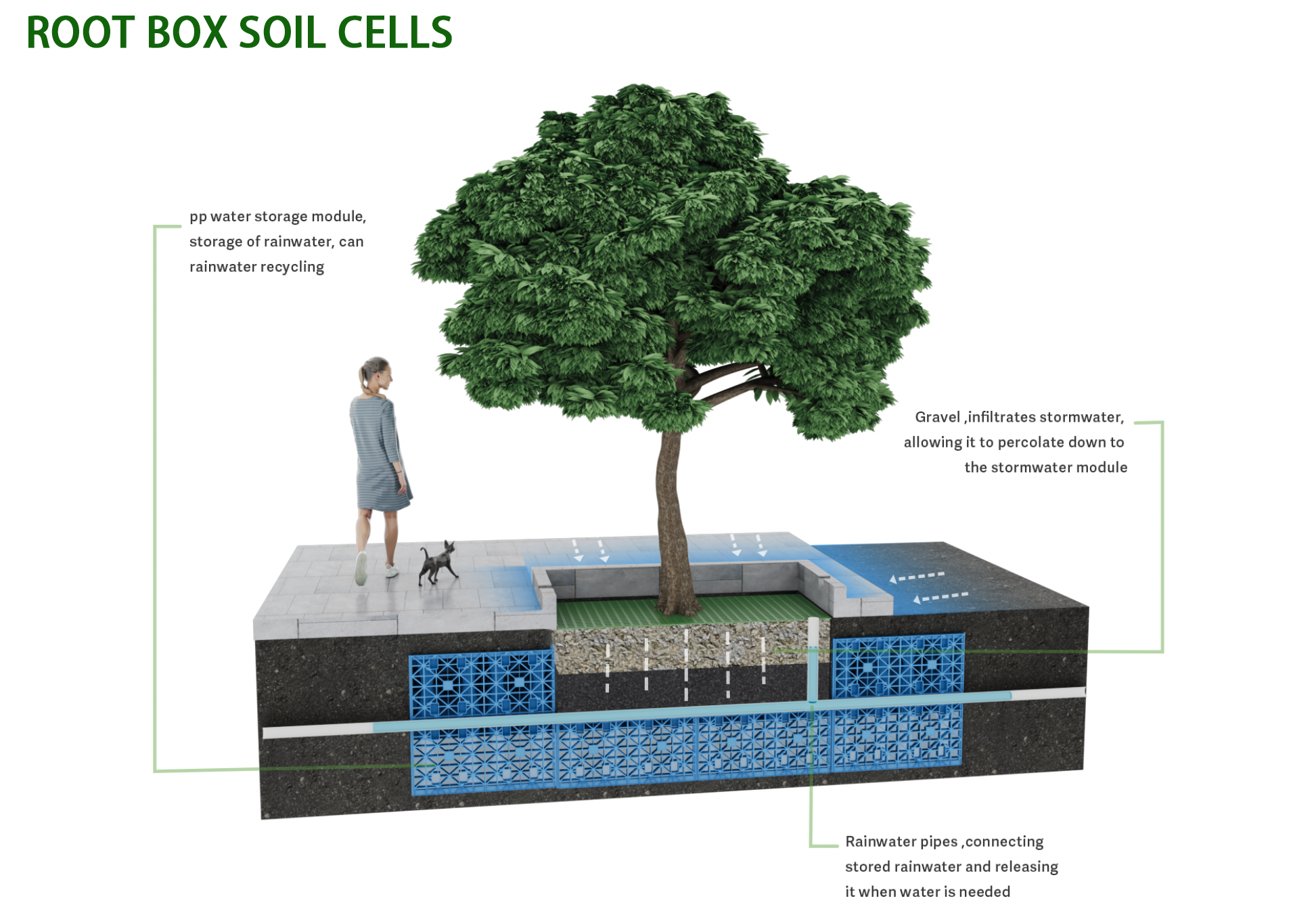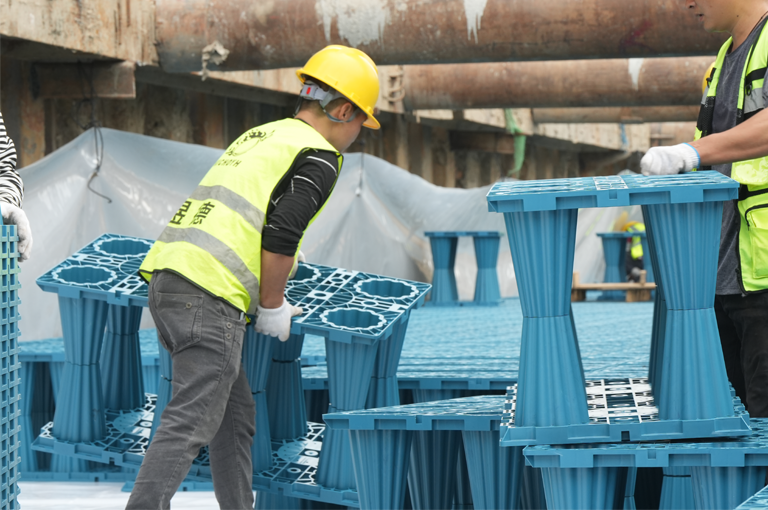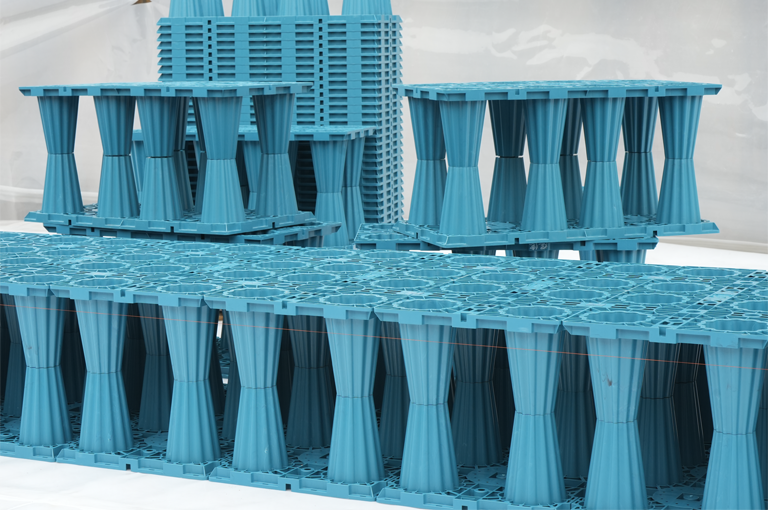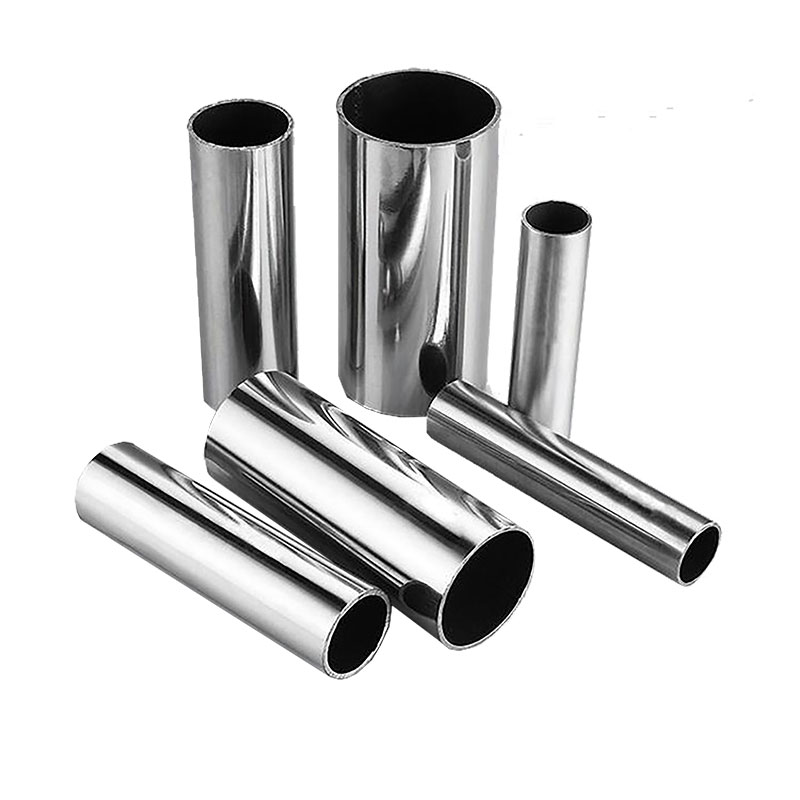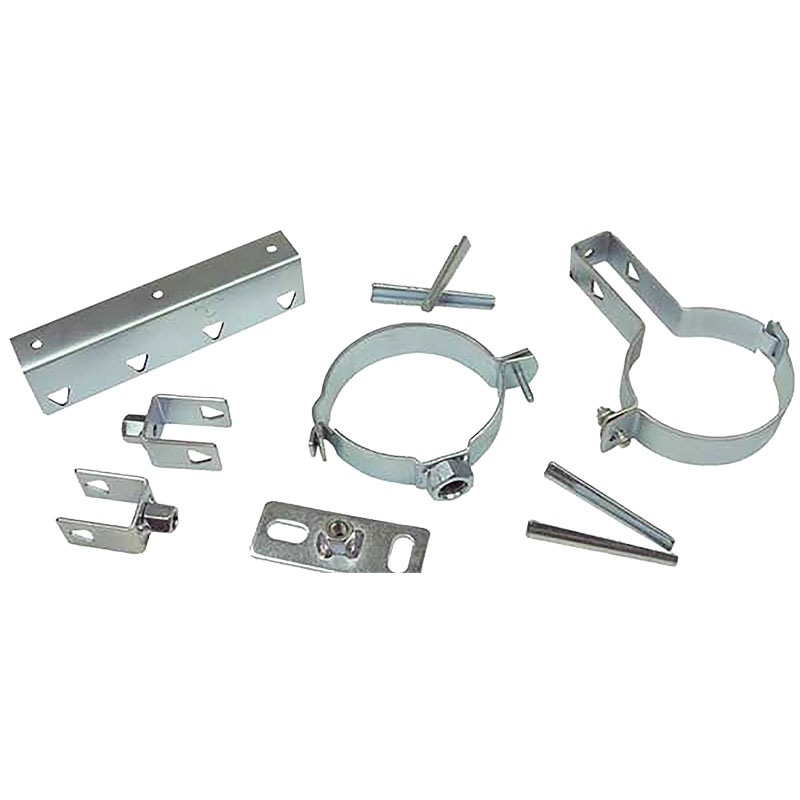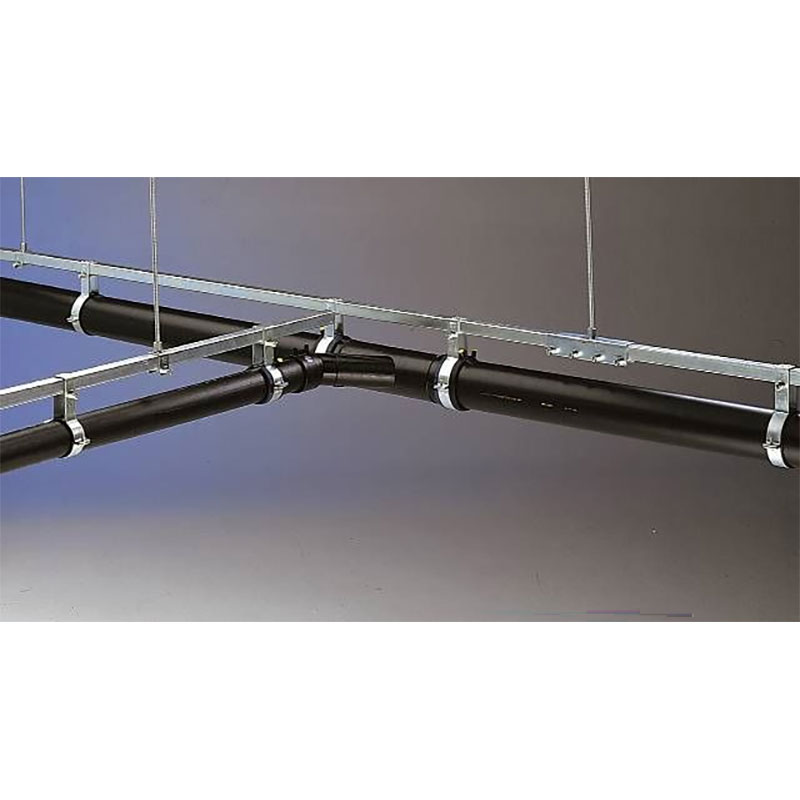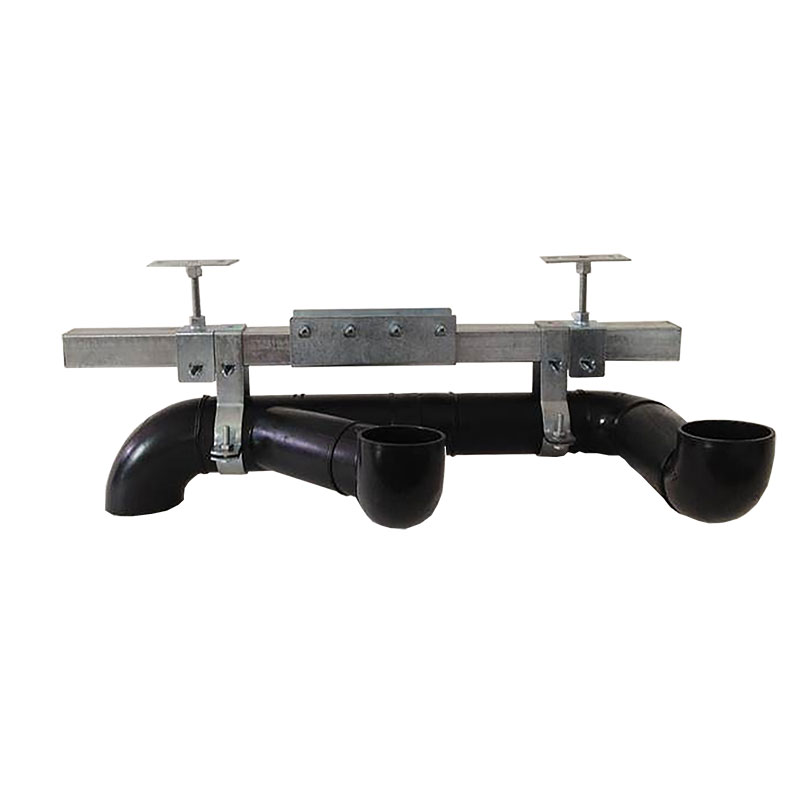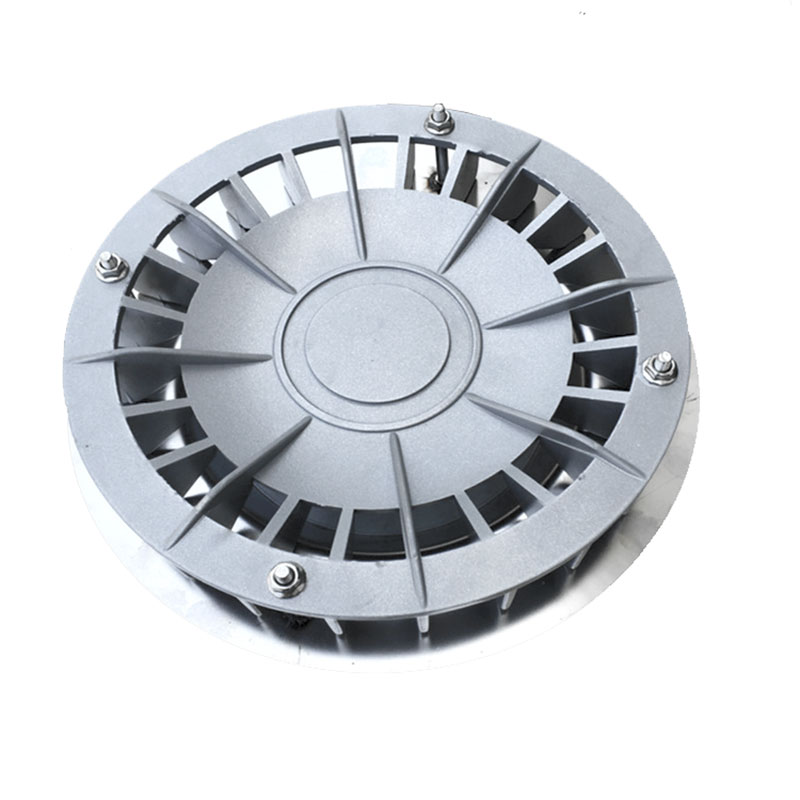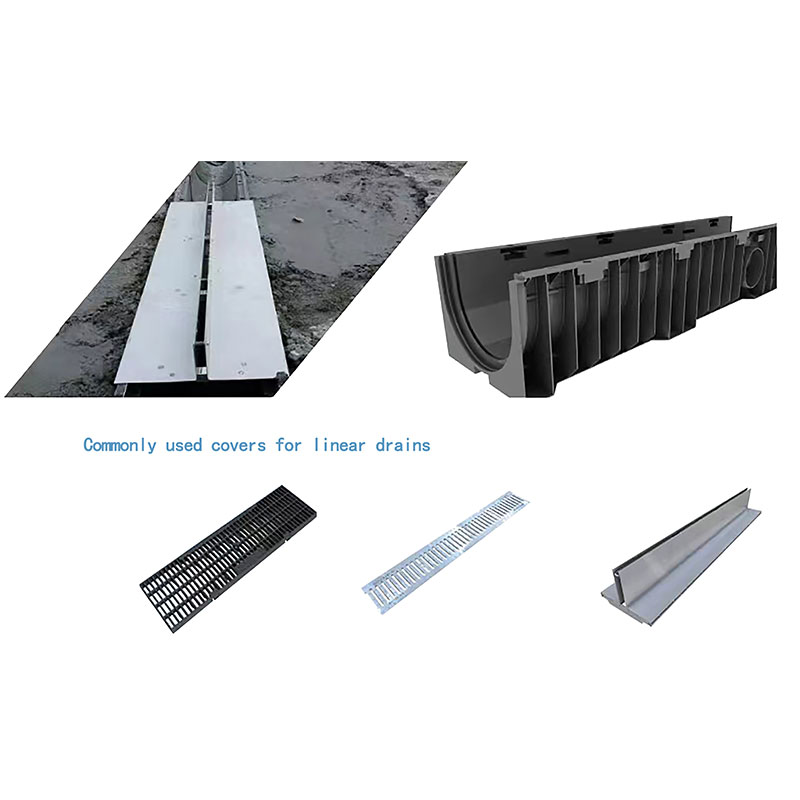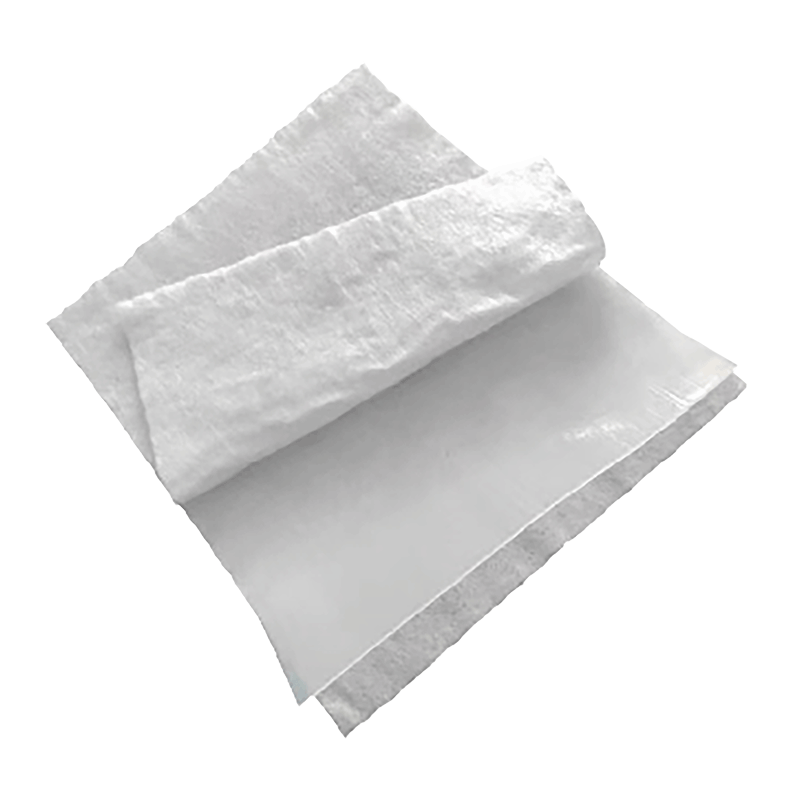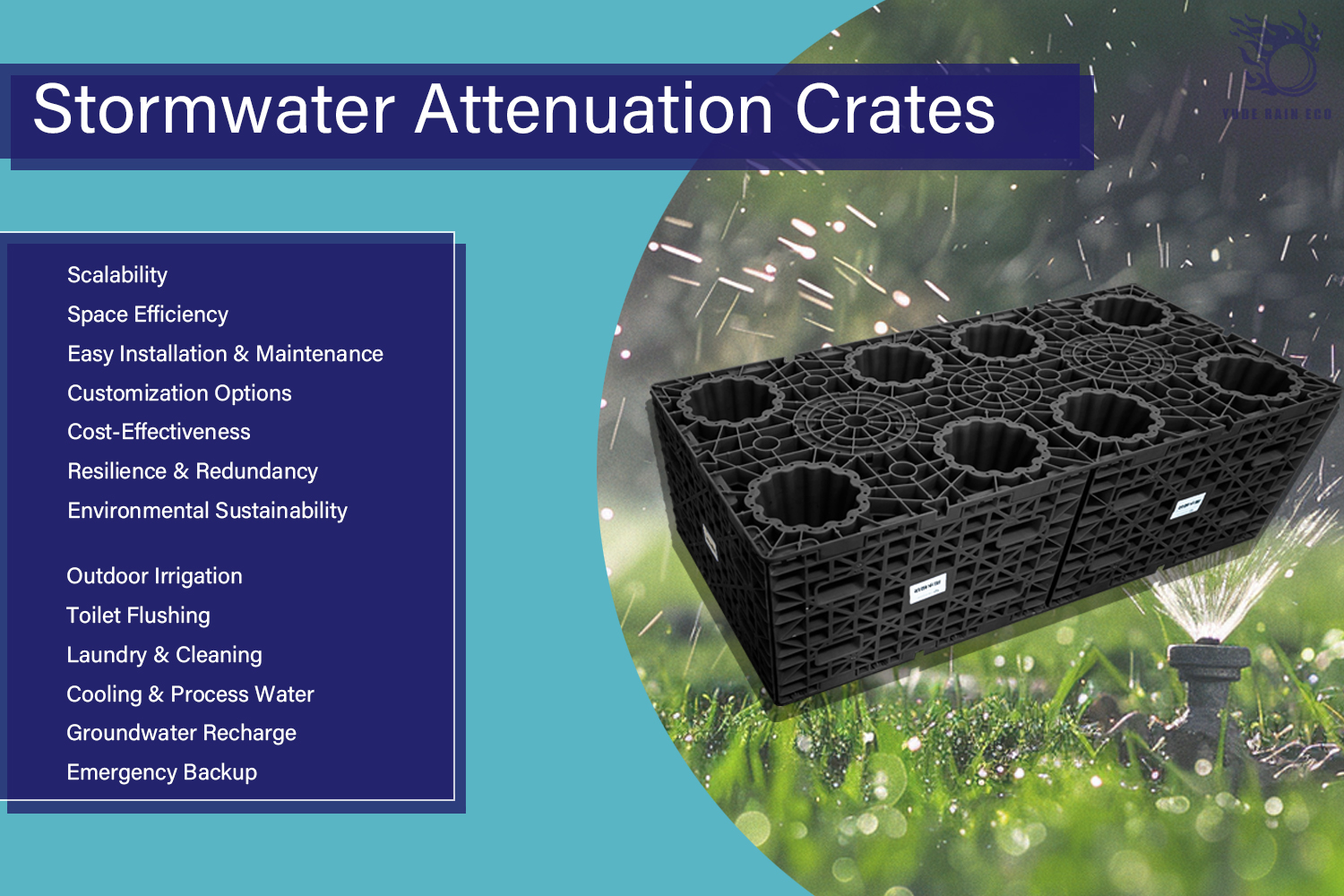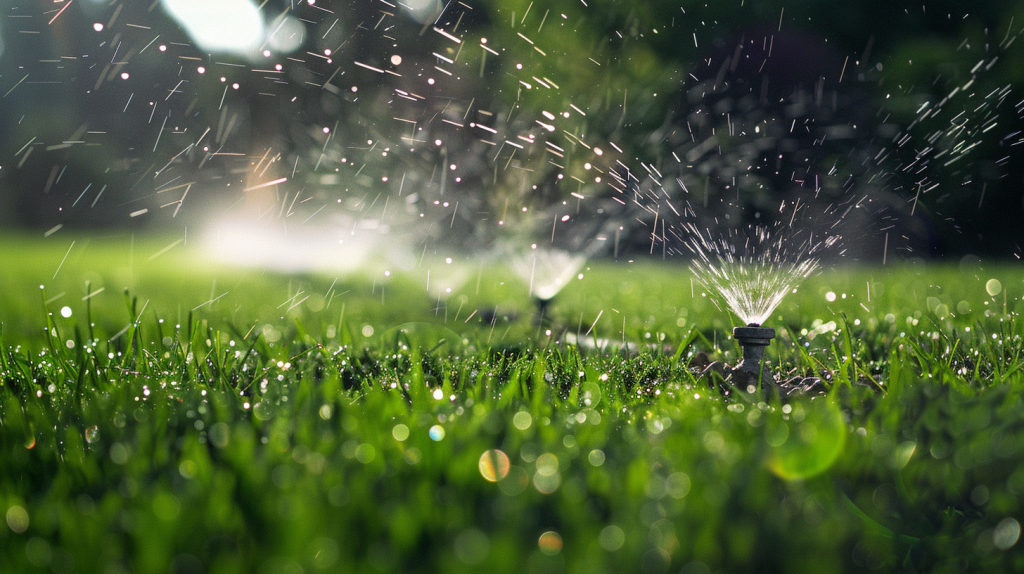1. What Is a Rain Attenuation Tank?
Understanding the Role of Rain Attenuation Tanks in Sustainable Water Management
A rain attenuation tank, often referred to as a stormwater detention or retention tank, is a subterranean structure designed to manage excess rainwater runoff during intense rainfall events. These tanks temporarily store rainwater and release it at a controlled rate into the surrounding soil or local drainage systems, thereby preventing immediate overload of urban infrastructure. Yude’s rain attenuation tanks are constructed from high-grade polypropylene (PP) materials, renowned for their exceptional durability, chemical resistance, and lightweight nature, making them a superior choice for long-term stormwater management across diverse environments.
1.1 Why Are Rain Attenuation Tanks Needed?
Rain attenuation tanks are essential components of contemporary stormwater management strategies, particularly in urbanized settings. Key reasons for their necessity include:
Flood Prevention: In urban areas, extensive impermeable surfaces such as roads, rooftops, and pavements prevent natural infiltration of rainwater into the ground, leading to rapid runoff. During heavy rainfall, this can overwhelm municipal drainage systems, causing flash floods. Rain attenuation tanks effectively mitigate this risk by temporarily holding excess water and releasing it gradually, thereby smoothing out peak flow rates and preventing flooding.
Climate Change Adaptation: With climate change contributing to more frequent and severe weather events, including heavy rainfall, the need for robust stormwater management solutions has grown. Attenuation tanks help cities and municipalities adapt to these changes by providing additional capacity to manage increased stormwater volumes.
Erosion and Sediment Control: Fast-moving stormwater can cause significant erosion in natural and urban environments, damaging infrastructure and degrading natural habitats. By slowing down the release of water, attenuation tanks reduce the erosive force of runoff, helping to protect soil and prevent sediment transport into waterways, which can lead to siltation and degradation of aquatic ecosystems.
Pollutant Reduction: Urban stormwater often carries pollutants such as oils, heavy metals, nutrients, and debris from surfaces like roads and rooftops. Rain attenuation tanks provide an opportunity for sediments and some pollutants to settle before water is released, reducing the load on downstream water bodies and improving overall water quality.
Regulatory Compliance: Many regions have stormwater management regulations that require developments to manage onsite runoff to reduce the impact on public drainage systems. Attenuation tanks are a critical tool for meeting these regulatory requirements, particularly in areas with stringent environmental protection laws.
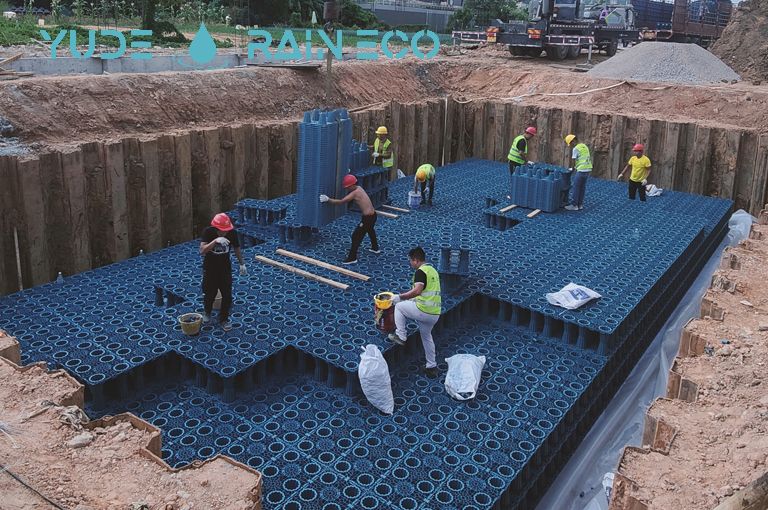
1.2 Applications
Residential Developments: In suburban and urban housing projects, these tanks manage runoff from roofs, driveways, and streets, preventing local flooding and reducing pressure on public drainage systems. For example, in a typical residential area with 100 homes, a rain attenuation tank system can reduce runoff by up to 50% during peak rain events, according to data from urban planning studies.
Commercial and Industrial Sites: Facilities with large impervious surfaces, such as shopping centers, warehouses, and factories, generate significant volumes of stormwater. Installing attenuation tanks helps manage this runoff effectively, preventing flooding and erosion in adjacent areas. A study by the U.S. Environmental Protection Agency (EPA) found that stormwater management systems incorporating attenuation tanks can reduce runoff volume by 70-90% compared to conventional drainage systems.
Urban Infrastructure: In densely populated cities, where open space is limited and natural drainage is inadequate, rain attenuation tanks are crucial for managing stormwater and reducing the risk of flooding in streets and public spaces. They are particularly useful in “grey” infrastructure settings where integrating green solutions is challenging.
Public Spaces and Recreational Areas: Parks, playgrounds, sports fields, and golf courses benefit from rain attenuation tanks, which help maintain usability and safety during and after heavy rain. In areas with significant recreational usage, maintaining dry conditions is essential to prevent soil compaction and turf damage.
Infrastructure Projects: Roads, railways, and other infrastructure projects often require effective stormwater management to prevent water accumulation and soil erosion. Rain attenuation tanks provide a durable, low-maintenance solution for managing runoff in these settings. Data from a civil engineering study suggests that properly designed attenuation tanks can reduce the need for road repairs due to water damage by 30-40%.
1.3 The Working Principle of Rain Attenuation Tanks
Rain Attenuation Tanks are devices designed to control excess water from heavy rainfall. Their working principle is simple yet effective: when heavy rain occurs, the amount of rainfall often exceeds the capacity of traditional drainage systems. The attenuation tank temporarily stores the excess water, reducing the pressure on the drainage system. The system is designed to release the water gradually, preventing sudden surges from impacting the drainage network or downstream areas. The process works as follows:
-
Water Storage:The attenuation tank collects excess water in its large capacity storage during heavy rainfall and holds it until the water level decreases.
-
Gradual Release: The drainage holes or valves in the tank are designed to slowly release the stored water, allowing the drainage system to gradually cope with the water flow.
-
Flow Regulation:The attenuation tank is equipped with a built-in regulation system to ensure the water is discharged at a controllable rate, reducing the strain on the urban drainage system.
1.4 How to Select the Right Specification Based on Different Needs?
Choosing the right specification of rain attenuation tanks requires an evaluation of several factors, with the two most important being rainfall volume and land area.
-
Rainfall Volume: The right capacity is chosen based on local rainfall levels and the frequency of heavy rainfall. Engineers typically use historical rainfall data to predict the capacity needed for the design.
-
Land Area: The design must take into account the land area of the target region to calculate the required storage space. Larger urban areas or commercial buildings require tanks with greater capacity to handle larger water flow.
For example, our YD StormBreaker 45® module (1000x500mm) is suitable for medium-sized projects, with a load-bearing capacity of 45 tons, ideal for commercial buildings or medium-sized residential areas. For larger-scale needs, the YD StormBreaker 60® module provides higher load-bearing capacity, suitable for large industrial parks or complex urban infrastructure projects.
1.5 Advantages of Yude’s Polypropylene Rain Attenuation Tanks
- High Load-Bearing Capacity:Our products have load-bearing capacities ranging from 32 tons to 60 tons, meeting the needs of projects of different sizes. They ensure stable operation even under harsh weather conditions.
- Long-Term Durability and Chemical Resistance: Polypropylene is resistant to a wide range of chemicals and does not corrode, making it an excellent material for environments that may be exposed to pollutants or harsh conditions. These tanks have an expected lifespan of 50+ years with minimal maintenance, significantly longer than tanks made from traditional materials like concrete or metal.
- Lightweight and Easy Installation: Compared to concrete or metal tanks, PP tanks are significantly lighter, reducing the costs and logistics associated with transportation and installation. This feature also allows for more flexible installation in challenging or confined spaces.
- High Storage Efficiency and Modular Design: Polypropylene tanks can be designed with a high storage capacity relative to their footprint, maximizing space efficiency, especially in urban areas where space is at a premium. The modular design allows for easy scaling, meaning multiple tanks can be connected to handle larger volumes of water as needed. This adaptability is crucial for projects that may expand or need to accommodate varying stormwater loads.
- Environmentally Friendly: PP is a non-toxic, recyclable material that does not release harmful substances into the environment. This makes Yude’s tanks a sustainable choice for eco-conscious developments. Life-cycle assessments show that PP tanks have a lower environmental impact compared to alternatives, with 40% less CO2 emissions during production and transportation.
- Customizable Features: Yude’s tanks can be tailored to specific site conditions and stormwater management needs, offering options like integrated silt traps, oil separators, and flow control devices. This level of customization ensures that each installation is optimized for its environment, enhancing both performance and durability.
1.6 International Certifications and Compliance
To ensure our products meet international market demands, they have been certified with several global standards, including:
-
CE Certification:CE certification ensures that our products comply with European market safety standards, guaranteeing quality and safety worldwide.
-
ISO Certification:Our products have been certified with ISO 9001 and ISO 14001, demonstrating our excellence in quality and environmental management.
Additionally, we can provide certification documents that meet local regulatory requirements, ensuring compliance in different regions worldwide.
1.7 Difference Between Rain Attenuation Tanks and Floor Rain Harvesting Tanks
While both rain attenuation tanks and floor rain harvesting tanks are involved in managing rainwater, their functions, applications, and designs differ significantly:
Primary Function: Rain attenuation tanks are designed primarily for short-term stormwater storage and controlled release to prevent flooding. In contrast, floor rain harvesting tanks collect and store rainwater for reuse, such as for irrigation, toilet flushing, or even as potable water after sufficient treatment. For example, a rain attenuation tank might release stored water within 48 hours to ensure readiness for the next rain event, while a harvesting tank could hold water indefinitely, depending on demand and supply cycles.
Water Retention Strategy: Attenuation tanks are designed to be emptied between rain events to always maintain capacity for flood control. Rain harvesting tanks, however, are designed to store water over longer periods, ensuring a steady supply for various uses. The retention and release strategy directly influences the design and capacity requirements of each system.
Installation and Maintenance: Attenuation tanks are typically buried underground to maximize land use and minimize aesthetic disruption, whereas rain harvesting tanks can be installed above or below ground based on site requirements and intended use. Maintenance practices also differ; attenuation tanks require regular inspections for sediment buildup and structural integrity, while harvesting tanks need routine checks for water quality and filtration effectiveness.
System Complexity and Cost: Rain attenuation systems are often simpler and less costly to install compared to rain harvesting systems, which require additional components like filtration units, pumps, and potentially complex plumbing for distributing stored water. However, the choice between the two depends on the specific needs of the site and the intended use of the collected rainwater.
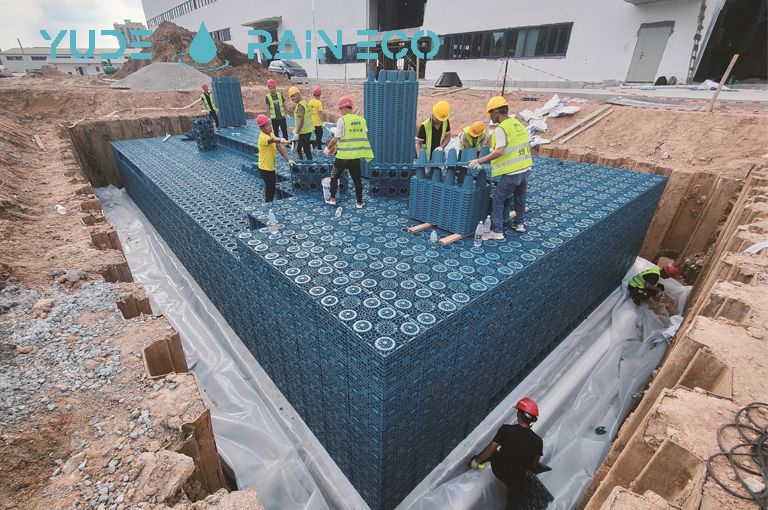
1.8 Where Should Rain Attenuation Tanks Be Used?
High-Density Urban Areas: In cities with extensive impervious surfaces and limited natural drainage, attenuation tanks are essential for managing stormwater runoff and preventing localized flooding. Urban planning guidelines often mandate their use to comply with flood risk management strategies.
Flood-Prone Zones: Areas that experience frequent or intense rainfall benefit significantly from attenuation tanks that control stormwater flow and mitigate flood risks. Data from flood management studies indicate that well-implemented attenuation systems can reduce flood peak flows by up to 80%.
Commercial and Industrial Zones: In locations with large impervious surfaces, such as parking lots and rooftops, controlling runoff is critical to prevent overloading drainage systems and causing downstream flooding. Attenuation tanks in these areas help manage high volumes of water efficiently.
New Developments and Infrastructure Projects: For new construction, including residential, commercial, and infrastructure projects, integrating rain attenuation tanks helps meet sustainable building standards and regulatory requirements for onsite stormwater management.
2. Rain Attenuation vs. Rainfall Frequency
The design and effectiveness of rain attenuation tanks are closely linked to local rainfall frequency and intensity. In areas with frequent and heavy rainfall, these tanks are essential for managing stormwater volumes effectively:
Design Considerations: Proper sizing of attenuation tanks is critical to handle peak rainfall events. Engineers use historical rainfall data and predictive models to calculate the appropriate tank capacity. For example, a region receiving an average annual rainfall of 1,000 mm with peak storm events of 50 mm in an hour would require a larger attenuation capacity than a region with less intense rainfall patterns.
Flow Control: Attenuation tanks can be equipped with adjustable flow control mechanisms to modulate the rate of water release, accommodating varying storm intensities and durations. This flexibility ensures that tanks can adapt to both typical and extreme weather conditions, maintaining effectiveness over time.
Adaptation to Climate Change: As climate patterns shift, with some regions experiencing more intense and frequent rainfall, the ability to adjust the design and operation of attenuation tanks becomes increasingly important. This adaptability ensures long-term resilience and effectiveness in managing stormwater.
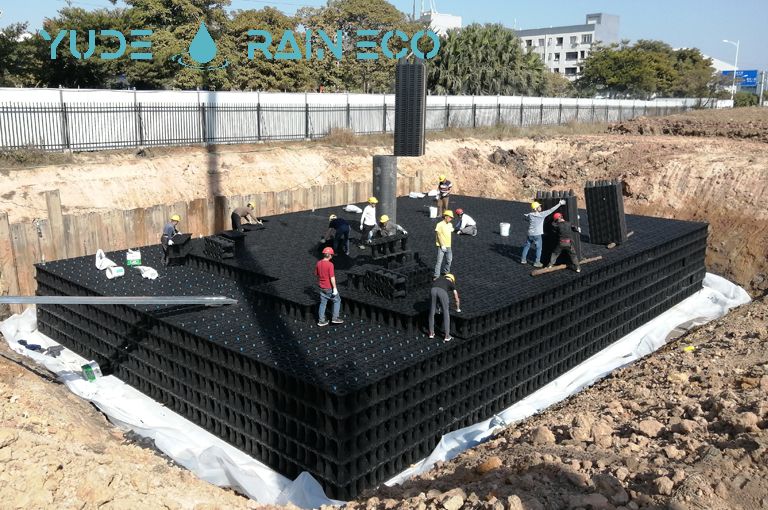
3. How Often Should Rain Attenuation Tanks Be Replaced?
Yude’s rain attenuation tanks made from polypropylene (PP) are engineered for long-term use, typically lasting between 20 to 50 years or more, depending on installation quality, environmental conditions, and maintenance practices:
Durability and Material Integrity: Polypropylene is a robust material resistant to UV degradation, chemical exposure, and mechanical stress, which contributes to the longevity of the tanks. With regular maintenance, these tanks can often exceed their minimum expected lifespan.
Maintenance Requirements: Regular maintenance is crucial to extending the life of rain attenuation tanks. This includes annual inspections to check for signs of wear, structural integrity, and sediment buildup, which can affect storage capacity and functionality. Proactive maintenance helps prevent minor issues from escalating into major problems, thus avoiding costly repairs or replacements.
Replacement Cycle: While the tanks themselves may last for decades, components such as inlet and outlet pipes, flow control devices, and seals may require more frequent replacement due to wear and tear. A well-maintained system with timely component replacement can function effectively for over 50 years.
Maintenance Tips:
- Annual Inspections: Conduct thorough inspections annually to assess the tank’s condition, identify potential issues like cracks or leaks, and ensure that all components are functioning properly.
- Sediment Management: Periodically remove accumulated sediment to maintain optimal storage capacity and prevent clogging. Sediment buildup can also harbor contaminants, so regular cleanouts are necessary to maintain water quality.
- Pipe and Component Checks: Ensure that all inlet and outlet pipes are clear of debris and fully operational. Replace any worn or damaged components promptly to avoid system failure.
- Water Quality Monitoring: If the attenuation tank is part of a broader water management system, periodic water quality testing is recommended to ensure that the tank is not contributing to downstream pollution.
By following a comprehensive maintenance plan and addressing potential issues proactively, the need for tank replacement can be significantly reduced, ensuring long-term effectiveness in stormwater management.
4. Frequently Asked Questions (FAQ)
Q1: Does the rain attenuation tank require regular maintenance?
A1: Our rain attenuation tanks are designed for low maintenance needs. Regular checks for clear drainage and occasional sediment removal are generally sufficient. Maintenance costs are lower compared to traditional stormwater management systems.
Q2: What types of buildings are suitable for rain attenuation tanks?
A2: Our products are widely used in commercial buildings, industrial parks, residential areas, and urban infrastructure, with customized solutions available based on project requirements.
Q3: How do I choose the right rain attenuation tank specification for my project?
A3: Choosing the right specification depends mainly on rainfall volume and building area. We recommend consulting with our professional team, who will assist in selecting the most suitable product specification for your specific needs.
Conclusion and Call to Action
Yude’s polypropylene rain attenuation tanks provide a robust, efficient solution for modern stormwater management, tailored to meet the diverse needs of urban, commercial, and industrial applications. With their long-lasting durability, adaptability, and environmental benefits, our tanks help protect communities from flooding, support sustainable water management practices, and comply with environmental regulations.
Contact Yude Rain Eco Today to learn more about our cutting-edge rain attenuation tanks and how they can benefit your property. Visit our website or email us for a consultation and discover how we can help you implement effective and sustainable stormwater solutions.


